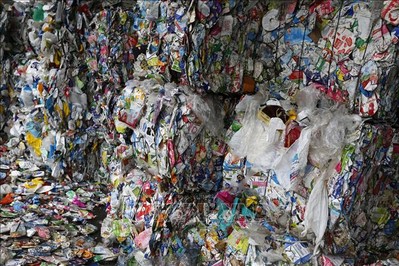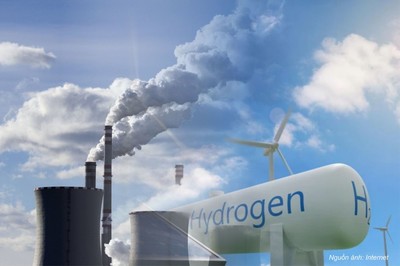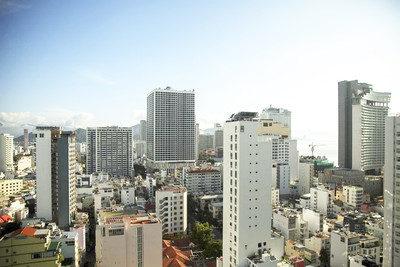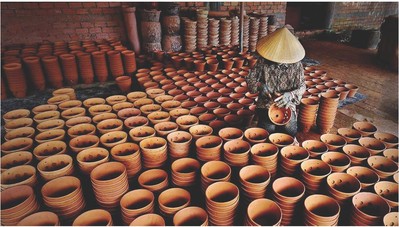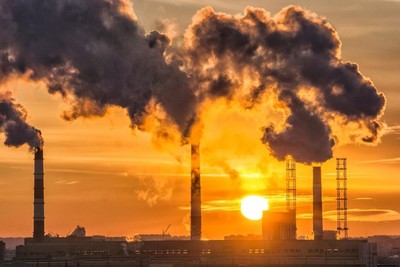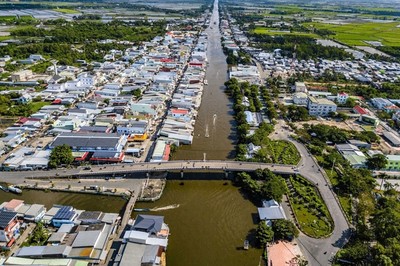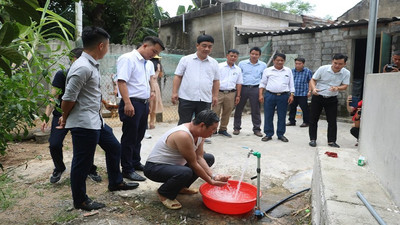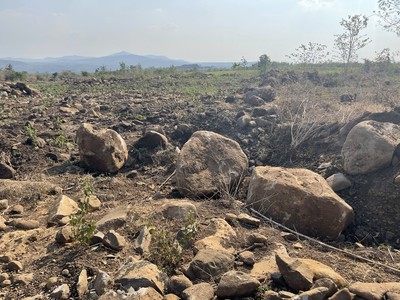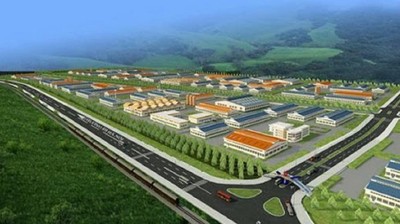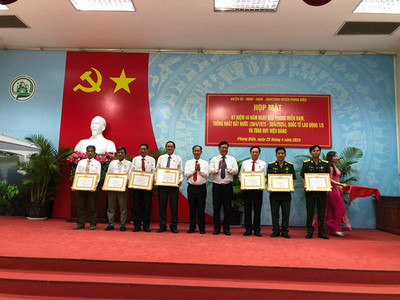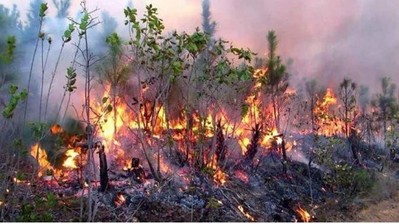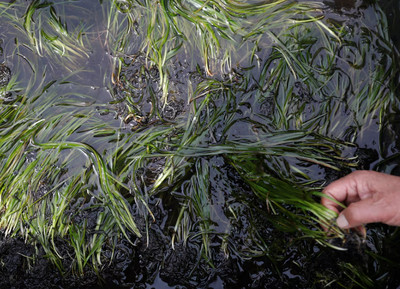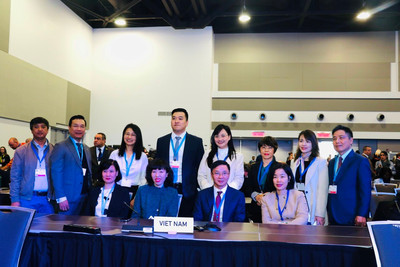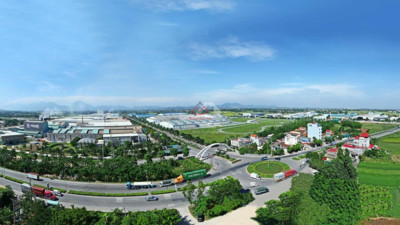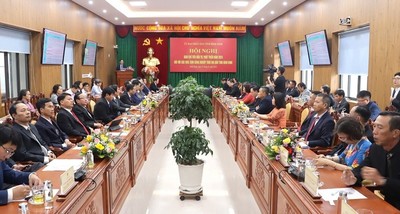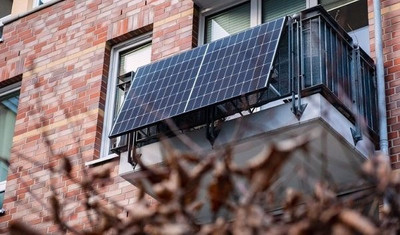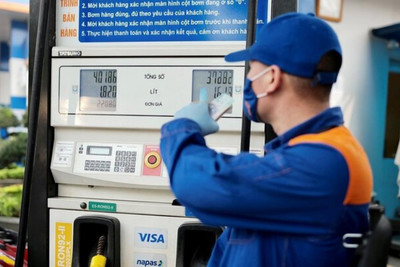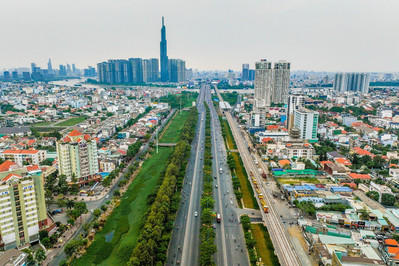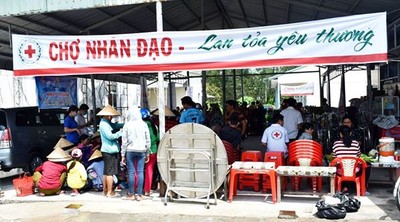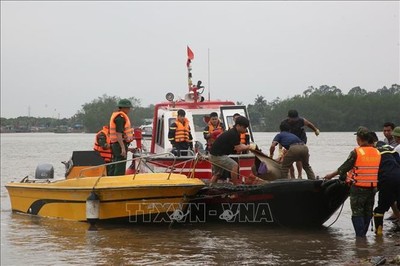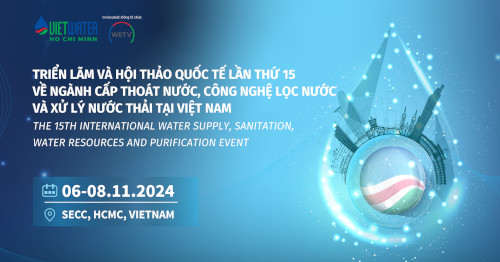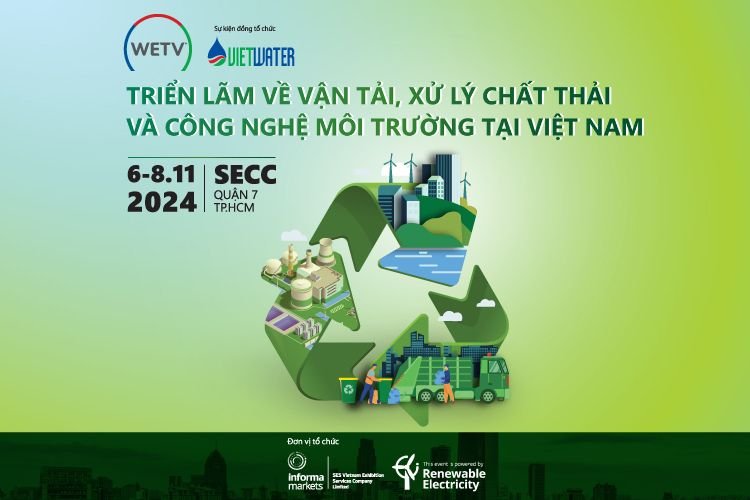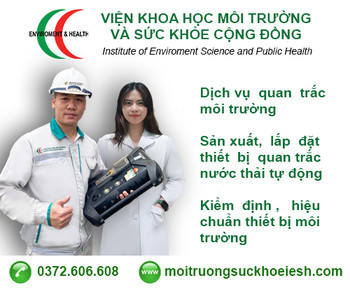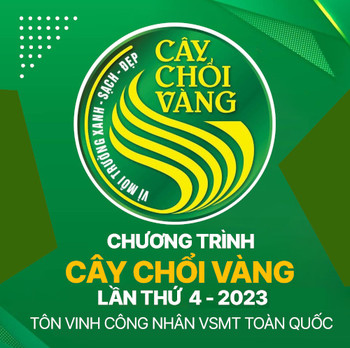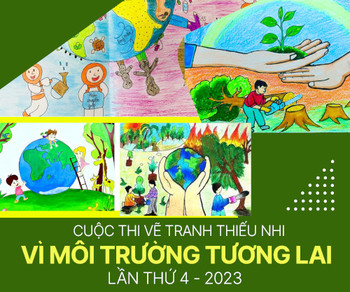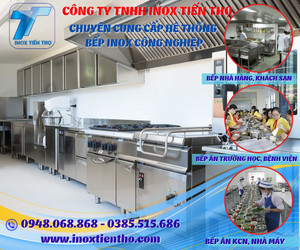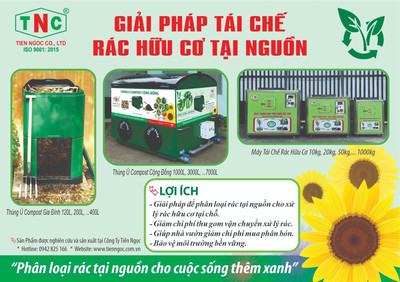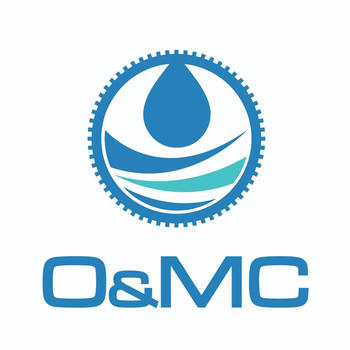Công bố quốc tế lĩnh vực môi trường số 24-2022
Trân trọng giới thiệu tới quý độc giả Công bố quốc tế lĩnh vực môi trường số 24-2022 với các nghiên cứu của các nhà khoa học nổi tiếng đã được đăng trên các tạp chí khoa học uy tín thế giới.
Trong những vấn đề liên quan tới môi trường, quản lý môi trường là lĩnh vực rộng, bao quát khắp các hoạt động kinh tế - xã hội, từ sản xuất kinh doanh cho đến sinh hoạt, các khu công nghiệp, làng nghề cho đến sản xuất nông nghiệp, từ thành thị đến nông thôn,... mỗi nơi đều có nhiều vấn đề đa dạng khác nhau.
Công bố quốc tế lĩnh vực môi trường số 24-2022 sẽ có những nội dung chính như sau:
Về quản lý môi trường
- Hệ thống đổi mới quốc gia và tính bền vững: Vai trò của khía cạnh môi trường là gì?
Parabens là chất gây ô nhiễm mới nổi: Tính bền vững trong môi trường, các quy trình xử lý và thực hành hiện tại.
- Chính sách môi trường có cải thiện chất lượng việc làm của lao động nhập cư không? Một thử nghiệm gần như tự nhiên về Hành động không khí sạch của Trung Quốc.
- Nguy cơ của sự trao đổi bất bình đẳng về mặt sinh thái: Tranh chấp khai thác đất hiếm ở Greenland.
- Sự tránh rủi ro chiến lược của các trung tâm năng lượng thông minh trong các thị trường năng lượng đã gia nhập áp dụng cách tiếp cận trò chơi ngẫu nhiên.
- Đánh giá vòng đời của quản lý chất thải y sinh để giảm tác động môi trường.
- Phân tích tính phù hợp của công nghệ thích hợp để đạt được tính bền vững: Một cuộc kiểm tra đa ngành trong một nền kinh tế đang phát triển.
- Tác động không đồng nhất và tổng hợp của các quy định về môi trường: Nghiên cứu lý thuyết và thực nghiệm về quản lý hợp tác đối với ô nhiễm khói mù của Trung Quốc.
- Đánh giá tính dễ bị tổn thương của nước ngầm: Đánh giá bao gồm các phương pháp thống kê và kết hợp mới.
Về môi trường đô thị
- Đánh giá các nguồn và tác động đến sức khỏe của PM10 trong môi trường đô thị ở đồng bằng ven biển phía đông của Ấn Độ.
- Các yếu tố quyết định dấu chân sinh thái và PM2.5: Vai trò của đô thị hóa, tài nguyên thiên nhiên và đổi mới công nghệ.
- Vận chuyển và số phận của màng nước tạo thành bọt ở vùng cửa sông đô thị.
- Ảnh hưởng của quá trình đô thị hóa đến sự phân bố các hydrocacbon thơm đa vòng ở các sông cửa sông của Trung Quốc.
- Đánh giá toàn diện về việc sử dụng các vật liệu dẫn điện để cải thiện quá trình phân hủy kỵ khí: Tập trung vào xử lý nước rỉ rác bãi chôn lấp.
- Động học hấp thụ tảo / vi khuẩn của nitơ hữu cơ hòa tan trong nước thải của các cơ sở xử lý nước thải đô thị.
- Chuyển từ năng lực thích ứng sang thực hiện thích ứng với các hiện tượng nắng nóng khắc nghiệt ở các khu vực đô thị của Liên minh Châu Âu: Giới thiệu U-ADAPT! cách tiếp cận nghiên cứu.
- Các xu hướng và yếu tố dự báo chuyển đổi đất ngập nước trong môi trường đô thị hóa.
- Sự xuất hiện của các dấu hiệu phân vi khuẩn và vi rút trong bùn thải thành phố và việc loại bỏ chúng trong quá trình xử lý bùn.
Về môi trường khu công nghiệp
- Phương pháp tiếp cận đa bước dựa trên quá trình lên men vi sinh vật hấp phụ để xử lý thuốc nhuộm để xử lý nước thải an toàn và tương thích với môi trường.
- Cạnh tranh liên chính phủ, phân bố không gian công nghiệp và chất lượng không khí ở Trung Quốc.
- Gần các khu công nghiệp hóa dầu và nguy cơ mắc bệnh viêm cầu thận mãn tính.
- Phân hủy hiệu quả xúc tác quang đối với các chất gây ô nhiễm công nghiệp bằng các hạt nano ZnO qua trung gian Piper longum.
- Loại bỏ diclofenac khỏi nước thải bằng cách sử dụng bùn hoạt tính và phân tích vi khuẩn đa kháng thuốc từ bùn.
- Cơ cấu công nghiệp, cường độ sử dụng năng lượng và hiệu quả môi trường ở các nền kinh tế phát triển và đang phát triển: Vai trò trung gian của ngành công nghiệp sơ cấp, cấp hai và cấp ba.
- Mô hình quản lý khí thải công nghiệp theo cụm từng bước.
- Phát triển chất hấp phụ geopolymer xốp và có thể tái sử dụng để xử lý nước thải nhuộm.
- Thiết kế và tối ưu hóa cấp khí theo hướng trong các cơ sở công nghiệp để giảm tiếp xúc với chất gây ô nhiễm dạng khí.
Dưới đây là tên và phần tóm tắt các nghiên cứu bằng tiếng Anh:
QUẢN LÝ MÔI TRƯỜNG
1. China's carbon budget inventory from 1997 to 2017 and its challenges to achieving carbon neutral strategies
Journal of Cleaner Production, Volume 347, 1 May 2022, 130966
Abstract
The global climate change situation partly depends on the climate change policies of countries around the world, including China. Therefore, it is necessary to reasonably reduce carbon emissions (CEs) and increase carbon sink in order to progressively achieve the carbon neutral (CN) goal. However, the capacity and the potential to achieve carbon neutral with the support of its ecosystem, that is to say the carbon neutral capacity (CNC) and potential, are still unclear. To this end, based on China's energy emissions data, meteorological and hydrological data, lithology data, and vegetation data, we used the GEM-CO2 model, soil respiration model, spatial autocorrelation analysis method and other methods to establish the spatial information map of China city-scale CNC from 1997 to 2017. Furthermore, based on the future climate, vegetation data, CEs data and their influencing factors in 2025–2060, the Back Propagation neural network model was used to predict the CN potential of China's provinces. This study found during the study period, annual CEs of 5.63 Pg CO2 were not absorbed, which is about 90% of the average annual CEs. And the carbon surplus regions were mainly concentrated in the less developed northeastern and southwestern border regions. Moreover, the change in the CNC in China from 1997 to 2017 was −13.37 Tg/yr, indicating that the CNC of China's terrestrial ecosystems overall reduced. It should be noted that most provinces are not highly polarized, that is, there is no significant differences in CNC between cities in the provinces. Moreover, the scenario simulation's method of IPCC provides a reference for this manuscript, so we set up two future scenarios (A2 and B1 scenarios). In the future, China is expected to achieve a carbon emission peak before 2030 under the B1 scenario while it will continue to grow under the A2 scenario. From 2017 to 2060, the CNC under the two scenarios (A2/B1) will decrease by 44.58% and increase by 15.54%. It follows then that the road to CN in China will be difficult without corresponding policy intervention. In short, this study has clarified China's CNC from the past to the future, as well as CNC's spatial distribution and changing trends. This provided theoretical and data support for China to introduce corresponding zero-carbon solutions based on its understanding of CNC.
2. National innovation systems and sustainability: What is the role of the environmental dimension?
Journal of Cleaner Production, Volume 347, 1 May 2022, 131164
Abstract
Innovation systems can play a decisive part in the globally coordinated efforts towards creating a sustainable future. However, the research that bridges national innovation systems and sustainability is scant. This study seeks to contribute to bridging this gap by exploring the relationships between national innovation systems and environmental sustainability at the country level. The multiple regression analysis shows that developed national innovation systems can enhance environmental sustainability at the country level, which should be accompanied by a transition towards sustainable consumption behavior and business practices. This study suggests that developing national innovation systems to foster environmental sustainability should encompass systemic changes that nurture and mold the multiple national innovation systems' factors and enable (environmentally) sustainable outputs. Implications of the findings for policy, theory, and management are discussed before concluding with the study's limitations and suggestions for future research.
3. Impact of international Maritime Organization 2020 sulfur content regulations on port air quality at international hub port
Journal of Cleaner Production, Volume 347, 1 May 2022, 131298
Abstract
In this study, various characteristics of port air quality that are affected by harbor activities, including ship emissions, were assessed at an international hub port (Busan port) and other major ports in South Korea from November 2017 to December 2020. We conducted an in-depth analysis of aerosol characteristics to investigate the impact of ship emissions, harbor activities, and emission control measures (reinforced limits of sulfur content in fuel oil, from 3.5% to 0.5% mass fraction) on the air quality around the Busan port, South Korea. Our results demonstrate that the impact of ship emissions on port air quality varied significantly according to chemical species. The largest impact on port air quality from ship emissions and air mass pathways (e.g., port wind sector) was confirmed by significantly higher concentrations of SO2 at the port. Our results of regression discontinuity design, a quasi-experimental impact evaluation method, revealed that the implementation of reinforced regulations (i.e., International Maritime Organization 2020 policy) significantly reduced SO2 and NH4+ concentrations at the Busan port, but did not affect the concentrations of PM2.5 and NO2.
4. Parabens as emerging contaminants: Environmental persistence, current practices and treatment processes
Journal of Cleaner Production, Volume 347, 1 May 2022, 131244
Abstract
The unmatched levels of water contamination by emerging contaminants (ECs), such as endocrine disrupting compounds (EDCs) and pharmaceuticals, has become a relevant environmental problem due to their considerable ecotoxicity and associated health issues. Among the EDCs, parabens are a group of preservative compounds widely used on a daily basis in cosmetic, personal care products, food products and pharmaceuticals. Parabens can cause a variety of adverse health effects, particularly in the endocrine system. They are frequently detected in environmental matrices (up to 170.9 μg/L in surface waters), with a critical presence and persistence in aquatic systems (up to 36,000 h of a half-life time). Despite the advances in wastewater treatment technologies, the design of existing treatment plants is not suited to remove these ECs, generating wastes containing high concentrations of persistent contaminants or chemically unstable products and can demand high amounts of energy for operation. Moreover, there is a lack of published health standards that provide guidelines for treating parabens, highlighting the need for innovative approaches. Microalgae bioremediation is starting to evolve scientifically as feasible for the removal of parabens, namely with laboratorial and pilot scale studies achieving removal efficiencies close to 100%. However, large scale microalgae-based treatment of wastewaters containing parabens and other ECs faces challenges of process optimization. This study reviews the physicochemical properties of parabens, their regulation and environmental persistence. It further provides a rigorous analysis of parabens removal by the existing treatment process in comparison with microalgae-based systems, reinforcing the need for further research.
5. Has environmental policy improved the job quality of migrant workers? A quasi-natural experiment on China's Clean Air Action
Journal of Cleaner Production, Volume 347, 1 May 2022, 131231
Abstract
Whether China's Clean Air Action can be imperative to job quality improvement of labour force while improving environmental quality is still an ongoing research topic. It is a critical area to understand the economic and social effect of environmental policy under the strategic goal of high-quality economic development. We use China's "Clean Air Action” policy as a quasi-natural experiment to identify the causal effect and potential long-run impact of the environmental policy on internal migrant workers' job quality. Based on the difference-in-difference estimation and a series of robustness tests, such as PSM-DID, counterfactual framework, placebo test, and event study, we find that China's Clean Air Action does have a positive effect on the job quality of migrant workers, and the job quality of the migrants in the Clean Air Action sampling cities increased by 0.31 on an average compared with cities that did not implement Clean Air Action. This positive effect will increase over time, and with the level of regional economic development and urban scale rise. Moreover, the job quality improvement could be driven by the productivity effect and the positive adjustment of labor force employment structure from action. This study provides an important empirical evidence for directions of this new action. Our results suggest that further policy measures with a clear goal together with strong-oriented and sub-regional joint governance mechanisms over different levels of government are called for.
6. The impacts of land supply on PM2.5 concentration: Evidence from 292 cities in China from 2009 to 2017
Journal of Cleaner Production, Volume 347, 1 May 2022, 131251
Abstract
The 2030 Agenda for Sustainable Development proposes to considerably reduce the number of deaths and diseases caused by air pollution. It pays special attention to attaining this via urban air governance and management. Although the development of China's air governance has been a lengthy process, there is no indication of instituting a plan based on land supply (LS) in the foreseeable future. This paper introduces a novel perspective of the role of LS in managing air pollution, and builds a comprehensive analysis framework that includes the quantity, structure, and price of LS for management of particulate matter with an aerodynamic diameter of 2.5 μm or less (PM2.5). The dynamic relationship between LS and PM2.5 is revealed by a panel-data vector autoregression model on a district scale. The study found that: (1) The Central District has the highest average annual PM2.5 concentration in China from the year 2009–2017. (2) The supply of the four types of land—industrial and mining storage land (IMSL), commercial and business facilities land (CBFL), residential land (RL), and other land (OL)—showed increase in the Central District, while only IMSL decreased in the Western District. The supply of IMSL decreased the most in the Northeast District, and in the Eastern District, only the supply of OL increased. (3) In the Northeast District, the quantity, structure, and price of LS have no significant effect on PM2.5 concentration. However, in China, the Eastern District, and Central District, the bidding, auction, and listing prices have a significant negative effect on the PM2.5 concentration. As for the Western District, it exhibits not only the "negative price effect,” but also the "negative quantity effect.” In future, the government should adopt different strategies: (1) For China, the Eastern District, and Central District, the bidding, auction, and listing prices should be further increased; (2) In the Western District, local government should also focus on expanding the area of LS.
7. The perils of ecologically unequal exchange: Contesting rare-earth mining in Greenland
Journal of Cleaner Production, Volume 349, 15 May 2022, 131378
Abstract
Rare-earth elements (REE) are essential to produce many ‘green’ technologies such as wind turbines and electric cars, yet the mining and processing of these minerals are highly polluting and environmentally damaging. Ever since China monopolized the REE industry in the 2000s, there has been a scramble for securing new deposits around the world. Greenland possesses an abundance of REE deposits, most of which remain undeveloped, yet the largely Indigenous Inuit population is split over whether REE mining is the right development path for the country. This article mobilizes a historical narrative approach, analyzing documents, interviews, government reports as well as academic and news articles, to understand the recent controversies around REE mining in Greenland within the strategic context of the nascent global green economy. We use ecologically unequal exchange (EUE) theory to understand how Greenland, as a peripheral, less-developed country, is seemingly destined to fulfill a role of provider of raw materials for more industrialized countries that now urgently need to decarbonize their economies. Yet, this development path is contested by the Greenlandic Inuit who seek self-determination and the continuation of their traditional and sustainable ways of living that are highly dependent on nature-based industries such as fishing and hunting. We contribute to EUE theory by highlighting the agency peripheral countries have in defending their self-determined, place-based development paths.
8. Strategic risk aversion of smart energy hubs in the joined energy markets applying a stochastic game approach
Journal of Cleaner Production, Volume 349, 15 May 2022, 131386
Abstract
Multi-carrier energy systems are defined as a concept within the energy hub notion. The energy hub operator aims to investigate maximizing the system profit through strategic behaviors and optimal bidding when participating in joined energy markets containing natural gas and electric power. Bi-level programming is applied for such conditions dividing the complex problem into two separate levels. In the upper-level structure, each energy hub seeks profit maximization. In the lower level structure, market clearing is found to maximize the social welfare of the system. Game-theoretic approaches as mathematical programming with equilibrium constraints (MPEC) solve the bi-level programming. In this regard, the Monte-Carlo simulation is applied to incorporate renewable energy uncertainty and intermittency nature. The MPECs form an equilibrium programming with equilibrium constraints (EPEC) to solve the defined approach. Furthermore, the Conditional Value at Risk (CVaR) algorithm is applied to the risk aversion decision-making. Hence, applying the CVaR in a game setting of multi-energy carriers using bi-level programming in a renewable-based environment is the main contribution of the current paper. Two case studies are defined to determine the efficacy and correctness of the introduced structure. One example, containing one energy hub as the primary unit and another as a rival unit, is investigated to verify the joined energy market model. Another standard case study is conducted to confirm the proposed model's flexibility in congested and uncongested networks. The study's main implications are three-folded: the proposed model can provide the uniqueness and existence of the Nash equilibria. The values of strategic biddings in the congested mode are higher than those in the uncongested mode when both players act strategically. The CVaR results prove that risk aversion causes the system to be more vulnerable economically.
9. Life cycle assessment of biomedical waste management for reduced environmental impacts
Journal of Cleaner Production, Volume 349, 15 May 2022, 131376
Abstract
The increasing nature of biomedical waste and its improper disposal has become a significant concern, resulting in a negative impact on the environment. These are associated with the direct consumption of input materials along with generated co-products and wastewater. This paper aims to address the environmental burden of existing biomedical waste management in the northern part of India. It also aims to suggest some constructive steps which result in a less impactful environment through the Life cycle Assessment (LCA) methodology. LCA is a widely used sustainable assessment tool to evaluate the environmental performance of various waste management systems. The present study's functional unit is all the waste collected at a common treatment and disposal facility. A gate-to-gate approach has been performed based on the foreground data gathered from field surveys, semi-structured interviews, and background data of Eco invent database v1.03. The data has been further evaluated using LCA software SimaPro 9.1.0.4 utilizing the CML-IA impact assessment method. The impact categories include Abiotic Depletion (AD), Abiotic Depletion (fossil fuels) (ADF), Global Warming (GWP), Ozone Layer Depletion (OLD), Human Toxicity (HT), Freshwater Aquatic Ecotoxicity (FAE), Marine Aquatic Ecotoxicity (MAE), Terrestrial Ecotoxicity (TE), Photochemical Oxidation (PO), Acidification (AF), and Eutrophication (EP). The results indicate that the integrated system, including incineration with energy recovery, autoclave-shredder, chemical disinfection, and Effluent Treatment Plant (ETP), reduces the environmental burden compared to the present state. The reliability of the model is tested using sensitivity and uncertainty analysis. The analysis identifies the influential key processes, parameters, and impact categories. This paper suggests that LCA is a beneficial tool for the decision-makers and managers to take strategic decisions for reducing environmental burden and developing a life cycle inventory database for the developed economies.
10. Analysing appropriateness in appropriate technology for achieving sustainability: A multi-sectorial examination in a developing economy
Journal of Cleaner Production, Volume 349, 15 May 2022, 131204
Abstract
Appropriate technology has emerged as a critical driver for sustainable development in developing countries where a massive population depends on small and medium-sized businesses. Appropriate technologies are energy-efficient, which corresponds to environmental sustainability. The benefits of appropriate technology may range from providing economic sustainability for availing affordable solutions in a resource-constrained environment to promoting social sustainability by fostering inclusivity of marginalized sections of the society. However, the appropriateness, which is the perceived quality of appropriate technology, largely remains unaddressed in prior research. Therefore, the current study proposes a framework to explore determinants of appropriateness and examine the interplay among them anchored on resource mobilization theory. Four case organizations of a developing country are empirically analyzed to obtain appropriateness factors from the perspectives of multiple stakeholders, namely, enterprises, developers, and users. Next, a decision-making technique is applied to derive the cause-effect relationship between the identified factors. The results contribute five factors of appropriateness: technological, socio-economic, organizational, market, and environment to the literature on appropriate technology. The former three factors induce the latter two factors of appropriateness. Understanding the interplay among the indicators from a multi-stakeholder perspective assists the policymakers in facilitating the adoption of appropriate technologies at the grassroots level to achieve sustainable development goals in developing economies.
11. Heterogeneous and synergistic effects of environmental regulations: Theoretical and empirical research on the collaborative governance of China's haze pollution
Journal of Cleaner Production, Volume 350, 20 May 2022, 131473
Abstract
The "30/60 target” of carbon emission peak and carbon neutrality proposes higher requirements for China's environmental management, emphasizing the importance of collaborative governance, rather than the "territorial trap” of unilateral environmental regulation (ER). Based on our analytical framework, the synergy of heterogeneous ER (SHER) was proposed and measured; thus, the heterogeneity and synergy mechanism of government-based (GER), enterprise-based (EER), and consumer-based (CER) ERs were developed and empirically evaluated, using spatial panel data models, with province-level panel data from 2005 to 2015 in China. The results are as follows: (i) Significant spatial autocorrelation was discovered for the SHER, which forms different agglomerations with a dynamic evolution of geographical distribution, especially in the low-low aggregation type. (ii) Significant heterogeneous impacts of GER, EER, and CER on haze pollution were found, that is, a "U-shaped” relationship, an inverted "U-shaped” curve, and a nonlinear association, respectively. (iii) A strong synergistic effect of GER, EER, and CER was verified, which greatly reduced haze pollution. (iv) A positive regulation effect of the SHER on enhancing the effectiveness of GER, EER, and CER was revealed, especially for CER, changing its impact from recessive to dominant. These findings provide a new perspective with theoretical and practical support for the management of air pollution.
12. Do environmental regulations of carbon emissions and air pollution foster green technology innovation: Evidence from China's prefecture-level cities
Journal of Cleaner Production, Volume 350, 20 May 2022, 131537
Abstract
This study investigates the effects of environmental regulations of carbon emissions and air pollution on green technology innovation by examining a panel data of 281 prefecture-level cities of China from 2004 to 2016. The results show that: (1) Environmental regulations of carbon emissions and air pollution had a positive effect on the cities' green technology innovation as measured by green invention patent applications, which is consistent with the "Porter Hypothesis”; (2) Environmental regulations of carbon emissions had a greater impact on green technology innovation than those of air pollution; (3) Local governments’ human resource and financial investments in R&D activities positively moderated the association between environmental regulations and green technology innovation.
13. Air stagnation in China: Spatiotemporal variability and differing impact on PM2.5 and O3 during 2013 - 2018
Science of The Total Environment, Volume 819, 1 May 2022, 152778
Abstract
In recent years, winter PM2.5 and summer O3 pollution which often occurred with air stagnation condition has become a major concern in China. Thus, it is imperative to understand the air stagnation distribution in China and elucidate its impact on air pollution. In this study, three air stagnation indices were calculated according to atmospheric thermal and dynamics parameters using ERA5 data. Two improved indices were more suitable in China, and they displayed similar characteristics: most of the air stagnant days were found in winter, and seasonal distributions showed substantial regional heterogeneity. During stagnation events, flat west or northwest winds at 500 hPa and high pressure at surface dominated, with high relative humidity (RH) and temperature (T), weak winds in most regions. The pollutants concentrations on stagnant days were higher than those on non-stagnant days in most studied areas, with the largest difference of the 90th percentiles of maximum daily 8-h average (MDA8) O3 up to 62.2 μg m−3 in Pearl River Delta (PRD) and PM2.5 up to 95.8 μg m−3 in North China Plain (NCP). During the evolution of stagnation events, the MDA8 O3 concentrations showed a significant increase (6.0 μg m−3 day−1) in PRD and a slight rise in other regions; the PM2.5 concentrations and the frequency of extreme PM2.5 days increased, especially in NCP. Furthermore, O3 was simultaneously controlled by temperature and stagnation except for Xinjiang (XJ), with the average growth rate of 19.5 μg m−3 every 3 °C at 19 °C–31 °C. PM2.5 was dominated by RH and stagnation in northern China while mainly controlled by stagnation in southern China. Notably, the extremes of summer O3 (winter PM2.5) pollution was most associated with air stagnation and T at 25 °C–31 °C (air stagnation and RH >50%). The results are expected to provide important reference information for air pollution control in China.
14. Groundwater vulnerability assessment: A review including new statistical and hybrid methods
Science of The Total Environment, Volume 822, 20 May 2022, 153486
Abstract
The concept of groundwater vulnerability was first introduced in the 1970s in France to recognize sensitive areas in which surface pollution could affect groundwater, and to enable others to develop management methods for groundwater protection against surface pollutants. Since this time, numerous methods have been developed for groundwater vulnerability assessment (GVA). These can be categorized into four groups: (i) overlay and index-based methods, (ii) process-based simulation models, (iii) statistical methods, and (iv) hybrid methods. This work provides a comprehensive review of modern GVA methods, which in contrast to previous reviews, examines the last two categories in detail. First, the concept of groundwater vulnerability is defined, then the major GVA methods are introduced and classified. This includes detailed accounts of statistical methods, which can be subdivided into orthodox statistical, data-driven and Bayesian methods, and their advantages and disadvantages, as well as modern hybrid methods. It is concluded that Bayesian inference offers many advantages compared with other GVA methods. It combines theory and data to give the posterior probabilities of different models, which can be continually updated with new data. Furthermore, using the Bayesian approach, it is possible to calculate the probability of a proposition, which is exactly what is needed to make decisions. However, despite the advantages of Bayesian inference, its applications to date have been very limited.
15. Microbiome: A forgotten target of environmental micro (nano) plastics?
Science of The Total Environment, Volume 822, 20 May 2022, 153628
Abstract
Microplastics (MPs) and nanoplastics (NPs) are emerging pollutants in different environmental compartments (air, soil and water) and that may induce several ecotoxicological effects on organisms and their microbiota. A considerable number of studies has been addressing and highlighting the effects of MPs/NPs on biochemical, molecular and behavior effects of aquatic organisms. However, less attention has been focused on microbiota. Here, a critical overview of published studies focusing on microorganisms affected by MPs and NPs after in vitro or in vivo exposure is provided. Available studies regarding the properties of MPs/NPs, microbial phyla, experimental conditions, techniques employed, and effects are summarized. The link between microbiota disruption and other effects on other hosts (e.g., crustaceans, fish, and mammals) as also analyzed. Overall, the literature review shows that most studies with microorganisms were performed in vitro (MPs: 44.11%; NPs: 23.52%) in comparison with in vivo tests (MPs: 32.35%; NPs: 11.76%). The most studied MP/NPs were polystyrene particles, generally spheres, with sizes <50 μm and concentrations ranged between 100 and 1000 mg L−1. The most studied main phyla were Proteobacteria, Bacteroidetes, Firmicutes, and Actinobacteria. MPs/NPs induced microbiome composition disruption, immune response (i.e., immune modulator release, immune cells activation and inflammatory response), enzyme activity changes (i.e., catalase, urease, dehydrogenase, alkaline phosphatase, and fluorescein diacetate hydrolase) and gene expression changes. The immune responses changes were related to microbiome disruption. Research gaps are highlighted and recommendations for future research indicated that microbiome is sensitive to MP/NPs and microbiome disruption can be a valuable tool to assess the risk of plastic particles to human and environmental health.
16. In support of circular economy to evaluate the effects of policies of construction and demolition waste management in three key cities in Yangtze River Delta
Sustainable Chemistry and Pharmacy, Volume 26, May 2022, 100625
Abstract
As the driving force of social and economic development worldwide, a vibrant and environmentally friendly construction industry in every country is a necessary element for a successful and green global economy. China has a vibrant construction industry but faces environmental challenges posed by rapid urban redevelopment that generates huge quantities of construction and demolition (C&D) waste in most of its key cities. An understanding of C&D waste management in such cities, including the effectiveness of low carbon and waste reduction policies, can provide the basis for the sustainable development and economic growth of China’s construction industry. This study therefore evaluated the effectiveness of the C&D waste management policies of three key cities in China’s Yangtze River Delta region: Nanjing, Shanghai, and Hangzhou. Information was collected and presented based on statistical analysis and qualitative assessment of the total C&D waste and governance policies of each of the three cities between 2007 and 2018. The results show that Shanghai’s C&D waste annual total difference over the 11 year period is the largest at 2.85 million tons, a decrease of 36.8%, while Hangzhou has the largest difference in the total annual amount of C&D waste of 0.82 million tons, a reduction of 11.8%. Findings from the study provide scientific-based decision support for local and central government when strengthening construction waste management policies in China, as the country works towards a circular economy.
MÔI TRƯỜNG ĐÔ THỊ
1. Assessment of sources and health impacts of PM10 in an urban environment over eastern coastal plain of India
Environmental Challenges, Volume 7, April 2022, 100457
Abstract
Aerosol health impacts are gaining considerable attention from the scientific community. Our study's primary purpose was to identify the source regions of PM10 and quantify its long-term health effects at an eastern Indian urban site Bhubaneswar from July 2018 to June 2019. The seasonal average of PM10 surface observations displayed higher values in winter, followed by post-monsoon, summer and monsoon. Eastern India, Northern India, and South-East Asia emerged as potential source regions of PM10 contributors to the study location using source-receptor models. The health endpoints, (i) incidence of chronic bronchitis in adults, (ii) post neonatal infant mortality and, (iii) prevalence of bronchitis in children, were estimated employing the World Health Organization developed model, AirQ+. The attributable proportion, the excess number of attributable cases, and the excess number of attributable cases per 100,000 population for three endpoints showed the highest impact during the winter season. Winter impact is 3 to 5 times higher compared to the rest of other seasons. This study highlights the health impact of PM10 on the population of Bhubaneswar, especially during winter. Thus, it is imperative to give considerable focus to controlling and mitigating air pollution at the investigation location.
2. Determinants of ecological footprint and PM2.5: Role of urbanization, natural resources and technological innovation
Environmental Challenges, Volume 7, April 2022, 100467
Abstract
Due to rapid economic growth and development, human demand for natural resources is growing in Bangladesh, which causes climate change, loss of biodiversity, soil degradation, and environmental hazard. Few studies have been conducted to investigate the determinants of ecological footprint and air quality (PM2.5) in Bangladesh between 1990 and 2016. This paper also investigates the existence EKC hypothesis in both ecological footprint and PM2.5 case. Single structural break analysis has employed to know the break point while estimating integration of each variable. After estimating the integration, we have employed ARDL bound testing approach to co-integration to show the long run relationship among the urbanization, natural resources, population density, economic growth, ecological footprint and PM2.5. For the robustness about the long run relationship among the variables, we also employ Bayer and Hanck joint co-integration. The results from both models demonstrate that urbanization, population density and energy consumption are major determinants of ecological footprint and PM2.5. However, technological innovation and natural resources are reducing the ecological footprint and PM2.5. The both the models provide evidence of existence of EKC hypothesis in case of Bangladesh. This study also has suggested some important policy implications regarding the environmental sustainability.
3. Evaluation of heavy metal content and potential ecological risks in soil samples from wild solid waste dumpsites in developing country under tropical conditions
Environmental Challenges, Volume 7, April 2022, 100461
Abstract
Solid waste management constitutes a major concern and unresolved problem in most parts of the world, particularly in developing countries where solid waste is disposed in unregulated dumpsites in the public spaces. This practice can lead to contamination of environmental compartments such as soil, surface and groundwater which could negatively impact human health. In this study, surface soil samples were collected from 15 selected solid waste dumpsites in Kinshasa City (Democratic Republic of the Congo) to examine the heavy metal content and potential environmental risks. The results highlighted a high concentration of metals in soil samples compared to local background values and international threshold. The average concentration of metals in all soil samples followed generally the order: Zn>Pb > Cu >Cr> Co> Cd> As> Hg. The calculated pollution indexes including Geo-accumulation, Enrichment Factor, Contamination degree and Potential Ecological Risk, revealed polymetallic contamination dominated by several of these metals in which Zn, Cu, Pb and Hg were of greatest concern indicating high environmental risks. This work showed that illegal wild landfills represent a real danger for the environment and human health. Due to the toxicity of heavy metals, the measures to establish a monitoring program that address uncontrolled landfills and solid waste management and disposal are recommended to reduce the load of contaminants in soils which can reach surface and groundwater. On the other hand, the use of manures from these dumpsites for agricultural purposes should be discouraged because they may be easily absorbed at alarming levels by vegetables.
4. Indicator-based vulnerability assessment of riparian zones in Nigeria's Ibadan region due to urban settlement pressure
Environmental Challenges, Volume 7, April 2022, 100501
Abstract
Riparian zones are important natural resources that provide a variety of functions and ecosystem services. The vegetation within the riparian zones is gradually being replaced by built-up land with little or no indication of a distinct riparian buffer, affecting its functionality. In this study, we used indicators derived from the remote sensing images supplemented with field-based observations to analyse the vulnerability of riparian zones in the Ibadan region, Nigeria. The changes in the landscape pattern of the riparian zones were studied over 20 years (2000-2019) by analysing and manipulating Landsat (7 & 8) and Sentinel-2 datasets using ERDAS IMAGINE 2015, ArcGIS 10.4 and Google Earth Engine. Existing base maps and field surveys were used to identify factors influencing modifications in riparian zones. Using selected indicators, the vulnerability of Ibadan's riparian zones was assessed and mapped. The vulnerability and settlements within the riparian zone were classified into four levels of vulnerability (low, medium, high, and very high) and three levels of urbanisation (low, medium, and high settlement density). The findings show significant changes in land cover within riparian zones. The changes were caused by human activities such as farming activities, construction of buildings, infrastructure development (e.g. construction of roads), and other human interferences (movements of humans, cattle grazing, etc.). It was discovered that 23.16 percent of the riparian zone is classified as low vulnerable, 75.93 percent as medium vulnerable, 1.05 percent as high vulnerable, and 0.03 percent as very high vulnerable. Furthermore, most of the areas with low, medium and high settlement density indicate medium vulnerability. Vulnerability assessment and its magnitude are context-specific where for various ecosystems such as riparian zones even a medium vulnerability could have a significant impact. The present study must only be considered as the preliminary observation to delineate zones that are immediately suffering urbanisation pressure. Any further critical evaluation would require evaluation of interlinked processes such as the ecological processes, impact on individual species, water and nutrient availability, etc. Nevertheless, the present study demonstrates the application of remote sensing archived temporal data to have first-hand information on the vulnerability of riparian zones with prominent indicators that could be retrieved from the remotely sensed images.
5. Soil-water adaptive management process: The case of on-site wastewater treatment systems in peri-urban areas in France
Environmental Challenges, Volume 7, April 2022, 100506
Abstract
This paper proposes a contribution to tackle urban sanitation issues giving some hindsight on a place-based science-practice collaborative project. Insights from a French public service in charge of On-site Wastewater Treatment Systems (OWTS) highlighted the need to deepen the understanding of soil infiltration assessments and to clarify their relation to some misunderstandings between actors. The initial aim was to explore how a knowledge based approach can offer an original perspective to historical "septic tanks” and overcome technical and organizational difficulties. In this work we consider OWTS as hybrid infrastructures necessary to collect, transport, treat and dispose of domestic wastewater on the plot where it is generated. We suppose that OWTS adaptive management (sludge not included) offer many opportunities regarding water circulation (ecological function), infrastructure diversity (redundancy), and soil-based decision making (spatial planning). The main objective of this paper is to document the French sociotechnical configuration through the interplay between soil and water actors, OWTS technics and local institutions. The originality is to look at OWTS through the lens systemic perspective of Nature-Based Solutions (NBS). We first contextualize OWTS implementation and planning by presenting technical design studies (water-soil interactions, indicators assessment) and the diversity and capacity of actors. Second, we build on the application of a soil-based methodology in a peri-urban district to provide a place-based outlook on the influence of soil infiltration rates variability in day-to-day management. While the current consideration given to soil infiltration rate in OWTS design studies created a situation of conflicts and contestations between actors, a sociotechnical transition is taking place with new regulations and innovative energy-driven device. Moreover, collective infrastructure for domestic wastewater is currently challenged by densification constraints in metropolitan areas (urban sprawl regulation). As a consequence, resolving binding measures for indicators assessment would support OWTS integration into mainstream urban development. Careful investigation of soil hydraulic functions is thus a steppingstone in the search for an adaptive strategy both at the plot and the neighborhood scales. Not only OWTS are opportunities to support the adaptive management process in the water sector, but OWTS have also the potential to improve soil-based decision-making in urban areas. Finally, valuating OWTS as useful NBS for wastewater management in urban areas supports the evaluation of soil capacities to deliver ecosystem services and contributes to justify land-use changes on a functional knowledge basis.
6. Transport and fate of aqueous film forming foam in an urban estuary
Environmental Pollution, Volume 300, 1 May 2022, 118963
Abstract
The deployment of aqueous film forming foams (AFFF) used for firefighting during emergencies and training often releases per- and polyfluoroalkyl substances (PFAS) into the environment. In October 2018, first responders in Providence, RI, USA applied an AFFF during a fuel spill. Due to the proximity of the incident to the upper reaches of Narragansett Bay (NB), an unknown quantity of gasoline and AFFF entered the estuary via surface runoff and stormwater drains. Water samples near the spill were collected approximately 15 h after the incident and analyzed for 24 PFAS. Minor increases in measured PFAS concentrations were observed relative to pre- and post-spill samples at monitoring sites near the incident, except 6:2-fluorotelomer sulfonate (6:2-FTS) that peaked post-spill (max 311 ng/L). After performing the total oxidizable precursor (TOP) assay on water samples and the AFFF concentrate, significant increases in perfluorocarboxylic acids (PFCAs) were observed. One compound, 6:2 fluorotelomer mercaptoalkylamido sulfonate (6:2-FTSAS), was identified as a major component of the AFFF used. Peak areas of 6:2-FTSAS and the degradation product 6:2-FTSAS-sulfoxide corresponded to observed increases in the TOP assay results and were useful as tracers of AFFF in surrounding waters. Elevated levels of PFAS at the time of sampling were limited to a confined area of the Providence River due to river flow and tidal action. Observed concentrations were also compared to hydrodynamic model results, and results confirmed rapid dissipation of AFFF components with distance from the spill. However, modeled results did not capture possible secondary releases of AFFF from local municipal stormwater and sewer infrastructure, as observational data suggest. The multiple lines of evidence of PFAS present in surface waters permitted a better assessment of the potential environmental impacts from products such as AFFF for which the chemical composition is largely unknown.
7. Effects of urbanization on the distribution of polycyclic aromatic hydrocarbons in China's estuarine rivers
Environmental Pollution, Volume 301, 15 May 2022, 119001
Abstract
Estuarine rivers are the primary medium for transporting pollutants from human activities to the ocean. Polycyclic aromatic hydrocarbons (PAHs) have substantial toxicity and pose a significant risk to ecosystem and human health. However, the influences of urbanization on their distribution, particularly in China where urbanization is occurring rapidly, remain unclear. This study took three coastal economic circles of China as research areas, and investigated PAHs (16 species) in the estuarine river water. 95.9% of the sampling sites demonstrated moderate PAHs pollution and moderate ecological risk. Coal and petroleum combustion was the primary source of PAHs, but the source composition varied among the regions. Air pollution caused by energy emissions, particularly carbon emissions, has a critical and differential effect on PAHs distribution and deposition. With the increasing use of clean energy, PAHs emissions have been gradually reduced, which provides an effective option for PAHs reduction in a rapidly urbanizing coastal region.
8. Corrigendum to "Spatial distribution and potential sources of microplastics in the Songhua River flowing through urban centers in Northeast China”
Environmental Pollution, Volume 301, 15 May 2022, 118928
Abstract
Microplastics (MPs) have elicited increasing concerns in freshwater systems worldwide. However, little information is available on the MP pollution in the Songhua River, the third largest river in China. And the understanding of the sources and pathways of MPs is limited. In this study, MPs were sampled from river water and waste water treatment plants in five cities along the Songhua River to investigate the occurrence, spatial distribution, characteristics, and potential sources of MPs. Polyethylene, polypropylene and polystyrene accounted for more than 95% of the total MPs. MP pollution was determined to be spatially heterogeneous. The concentration of MPs in the urban center was always considerably higher than that in the upper reach, and irregular variation was observed from the urban center to the lower reach for each city. Urbanization was one of the primary driving forces of spatial variability. Statistically significant positive correlations (p-value < 0.05) were noted between the average concentration of MPs in river water and population density (p = 0.0023) and number of industrial enterprises above designated size (p = 0.0042) of each city. Line and fiber were the major shapes, and white was the most dominant color. Large (1–5 mm) and small (≤ 1 mm) MP particles accounted for 50% each. Multiple correspondence analysis as a new methodological approach was conducted to elucidate the sources of MPs for the first time. The potential sources of MPs included daily use, fishing, agricultural, and industrial productions. This work provides information about MP contamination for future studies on freshwater systems and new insights into the source apportionment of MPs.
9. A comprehensive review on the use of conductive materials to improve anaerobic digestion: Focusing on landfill leachate treatment
Journal of Environmental Management, Volume 309, 1 May 2022, 114540
Abstract
Globally, around 70% of waste is disposed of in open dumps or landfill sites, with the leachate generated from these sites containing high concentrations of organic and inorganic compounds, which will adversely affect aquatic environments if discharged without proper treatment. Anaerobic digestion of landfill leachate is an environmentally-friendly method that efficiently converts organic compounds into methane-rich biogas. However, the widespread application of anaerobic digestion has been hindered by poor system stability, low methanogenic activity and a high level of volatile fatty acids (VFAs) accumulation, increasing the operational costs of treatment. Conductive materials can be added to the digester to improve the performance of anaerobic digestion in landfill leachate treatment systems and studies reporting the use of conductive materials for this purpose are hereby thoroughly reviewed. The mechanism of microbial growth and enrichment by conductive materials is discussed, as well as the subsequent effect on waste metabolism, methane production, syntrophic relationships and interspecies electron transfer. The porous structure, specific surface area and conductivity of conductive materials play vital roles in the facilitation of syntrophic relationships between fermentative bacteria and methanogenic archaea. In addition, the mediation of direct interspecies electron transfer (DIET) by conductive materials increases the methane content of biogas from 16% to 60% as compared to indirect interspecies electron transfer (IIET) in conventional anaerobic digestion systems. This review identifies research gaps in the field of material-amended anaerobic systems, suggesting future research directions including investigations into combined chemical-biological treatments for landfill leachate, microbial management using conductive materials for efficient pollutant removal and the capacity for material reuse. Moreover, findings of this review provide a reference for the efficient and large-scale treatment of landfill leachate by anaerobic digestion with conductive materials.
10. Leachate characteristics: Potential indicators for monitoring various phases of municipal solid waste decomposition in a bioreactor landfill
Journal of Environmental Management, Volume 309, 1 May 2022, 114683
Abstract
Leachate is a contaminated liquid generated during the bio-chemical decomposition processes of municipal solid waste (MSW) that occurred at semi-solid or solid-state in a bioreactor landfill (BLF). Conceptually, leachate from a BLF is analogous to the urine generated in the ‘human body’, on which the medical practitioners rely to diagnose and remediate ailments. In line with this practice, to monitor the complex MSW decomposition processes, prolonged investigations were performed to establish the temporal variation of different chemical parameters (such as pH, electrical conductivity, chemical oxygen demand, organic- and inorganic carbon, nitrate- and ammonium-nitrogen, sugars and volatile fatty acids) of the leachate collected from different cells (age≈ 6–48 months) of a fully functional BLF in Mumbai, India. Furthermore, to understand the effect of the climate, MSW composition and landfill operating conditions on the rate of the decomposition process, chemical parameters of the leachate obtained from a landfill located in the central part of Poland were compared with the BLF. The study reveals that the chemical parameters, except for the pH, evince a rapid reduction with time and attain a constant value, which indicates the ‘stabilized MSW’. Also, native microorganisms that are an integral part of MSW consume volatile fatty acids within a year in the BLF, which facilitate the rapid transformation of the decomposition process from acidogenesis and acetogenesis to the methanogenesis phase. It is worth iterating here that based on the long-term field study, a convenient and efficient methodology, which is currently missing from the literature, has been established to understand the kinetics of different phases of anaerobic decomposition. This study would be very helpful to the landfill operators, who are interested in accelerating MSW decomposition by augmenting leachate properties.
11. Algal/bacterial uptake kinetics of dissolved organic nitrogen in municipal wastewater treatment facilities effluents
Journal of Environmental Management, Volume 309, 1 May 2022, 114719
Abstract
The simulation and analysis of the degradation process of organic nitrogen contaminants in wastewater treatment facility effluent is important to the estimation of its actual contribution to eutrophication, and it is crucial to the developing of watershed protection plan. In this study, algal and algal/bacterial based bioassay was conducted to study the bioavailability of dissolved organic nitrogen contaminants in wastewater treatment plants effluents, and 4 kinetic models were used to describe the mineralization process. The traditional 1-pool model that was commonly used in water quality models showed poor correlation (r2 = 0.613 ± 0.261), while the other three models performed much better (r2 > 0.950). The model coefficient and simplicity were studied using Akaike information criterion and Bayesian information criterion, and Gamma model was indicated to be the best model since it presented the most parsimonious fit to the data with the fewest terms. This study exhibited that the bioavailability and degradation rate of organic nitrogen in wastewater effluent varied greatly, and this variation should be considered in water quality models. Besides, Gamma model could be used to modify the current Total Maximum Daily Load models to provide a scientific basis for making watershed protection plans and controlling eutrophication.
12. Moving from adaptation capacities to implementing adaptation to extreme heat events in urban areas of the European Union: Introducing the U-ADAPT! research approach
Journal of Environmental Management, Volume 310, 15 May 2022, 114773
Abstract
Extreme Heat Events (EHE) are a major concern for many urban areas worldwide and are considered as one of the deadliest natural hazards globally. Climate change and socioeconomic trends (exposure and susceptibility) are expected to exacerbate the risk of urban heat stress. Several urban areas have recently declared a climate emergency and initiated the adaptation process, but progress is still patchy, uncoordinated, and of varied quality. The main constraint is the lack of mechanisms for monitoring and reporting adaptation strategies, not allowing the supervision and evaluation of the adaptation process. The EU-funded project U-ADAPT! (Urban-Adaptation) focuses on the concrete expression of adaptation to evaluate the current implementation and effectiveness of adaptation measures and strategies to reduce Heat Disaster Risk (HDR), moving the emphasis from the study of vulnerability, resilience, and potential adaptation (adaptation capacity) of communities to the actual depth and pace of the past and current adaptation process. In this article, we discuss the theoretical support and design of the project and set the base for next project stages, which ultimately aims to create a unique interdisciplinary framework and a replicable multidimensional indicator on adaptation to EHE that empower European Union citizens to demand a safe and sustainable environment and hold institutions accountable for the adaptation process to current and upcoming risks.
13. Trends and predictors of wetland conversion in urbanizing environments
Journal of Environmental Management, Volume 310, 15 May 2022, 114723
Abstract
Wetlands provide critical ecosystem services including flood mitigation and habitat for diverse species, but globally, many wetlands have been destroyed. In urban areas and surrounding urban-rural fringes, many lost wetlands have been indirectly replaced with stormwater management (SWM) ponds. SWM ponds are designed to manage urban stormwater and contaminants, but only provide limited ecosystem services. In our study area, historic extent of wetland loss is partially documented, while more recent losses and SWM pond creation have not been fully reported. We examine wetland loss and SWM pond creation in seven southern Ontario (Canada) municipalities from 2002 to 2010. We then apply a Markov model to project future extent of wetland losses and SWM pond creation, with and without effects of specific land use and land cover types. We find that from 2002 to 2010, 95.5 ha of wetlands were lost, with most being smaller than 2 ha in size. A total area of 111.6 ha of SWM ponds was created, but on average, created SWM ponds were smaller than lost wetlands. Our projections to 2026 suggest wetland losses of 438.1 ha and SWM pond creation of 293.8 ha. We suggest a need for more stringent wetland protection policies to conserve wetlands that still exist in growing municipalities, especially smaller wetlands. Lack of such protection will weaken provisioning of wetland-related ecosystem services, which are more critical than ever in a changing climate.
14. Occurrence of bacterial and viral fecal markers in municipal sewage sludge and their removal during sludge conditioning processes
Journal of Environmental Management, Volume 310, 15 May 2022, 114802
Abstract
Fecal contamination in wastewater treatment system may pose severe threats to human health, but the detailed contamination of fecal bacterial and viral pathogens in municipal sewage sludge remains unclear. In addition, it is also unclear how sludge conditioning treatments would impact the distribution of fecal markers in conditioned sewage sludge. Before addressing these two issues, the possible polymerase chain reaction (PCR) inhibition effect when determining the abundances of fecal markers in both sludge solids and sludge supernatants should be solved, and methods of effectively concentrating fecal markers from sludge supernatant should also be developed. In the present study, we found that the serial tenfold dilution effectively reduced the PCR inhibition effect when determining the abundances of fecal markers including cross-assembly phages (CrAssphage), JC polyomavirus (JCPyV), human-specific HF183 bacteroides (HF183), human BK polyomavirus (BKPyV), human adenovirus (HAdV) and Escherichia coli (EC), while the utilization of negatively charged HA membrane was effective to recover fecal markers from sludge supernatant. The results of a six-month monitoring revealed that gene markers of CrAssphage, JCPyV, HF183, BKPyV, HAdV, and EC can be detected in municipal sewage sludge collected from a local wastewater treatment plant. Among the investigated four chemical conditioning methods, i.e., chemical conditioning with polyacrylamide (PAM), Fe[III]/CaO, or Fenton's reagent, and chemical acidification conditioning, chemical conditioning with Fenton's reagent was much more effective than the other three conditioning methods to reduce the abundances of fecal markers in the supernatant and solid of conditioned sewage sludge. Furthermore, the investigated fecal markers in the conditioned sewage sludge can be simultaneously attenuated by employing suitable conditioning methods, consequently reducing the associated environmental risks.
15. Emission characteristics and impact factors of air pollutants from municipal solid waste incineration in Shanghai, China
Journal of Environmental Management, Volume 310, 15 May 2022, 114732
Abstract
The emission of air pollutants from the municipal solid waste (MSW) incineration is one of the major concerns in air pollution. The up-to-date emission situation for Chinese MSW incineration is largely unknown. The emission factors (EFs) are the key parameters to estimate the emissions from MSW incineration. The localized EFs from MSW incineration in Shanghai, China were established using continuous emission monitoring system data from 2017 to 2019. Our results showed that the EFs were 9.80 g t−1 of PM, 46.62 g t−1 of SO2, 812.68 g t−1 of NOx, 25.84 g t−1 of CO, and 17.49 g t−1 of HCl for the period 2017–2019, nearly 1.7–24.2 times lower than those in 2010, implying that the current EFs should be updated to avoid overestimation of MSW emissions in China. Compared with 2010, the emissions of PM, SO2, CO, and HCl in 2019 were significantly reduced by 84%, 69%, 47%, and 72%, respectively, except for NOx with a 106% increase, although the corresponding MSW incineration amount increased by 356%. The current levels of air pollutants from MSW incineration have already met the current national emission standard as well as the stricter standard of the European Union (98.87%–99.91%). Our findings suggest that China should update the current standards of MSW incineration, which can be a benefit for the prevention and control of MSW incineration in the future. It is still challenging to control NOx emissions from MSW incineration for Shanghai and even greater China.
16. Urban greenery mitigates the negative effect of urban density on older adults' life satisfaction: Evidence from Shanghai, China
Cities, Volume 124, May 2022, 103607
Abstract
The influence of high-density environment on urban residents is controversial, and its effect varies with specific contexts. Meanwhile, urban planners and policy-makers are increasingly aware that urban greenery may mitigate the detrimental effects of crowded environments on quality of life in high-density cities. However, little empirical evidence is available in the context of China. This study aims to examine the complex relationship between urban density, urban greenery, and older people's life satisfaction, with survey data collected from 1,594 older adults in 129 neighborhoods in Shanghai, China. Urban density was assessed using floor area ratio and building coverage ratio respectively, and urban greenery was measured by street view greenery, greening rate, Normalized Differential Vegetation Index (NDVI), and accessibility to nearest parks. Results from structural equation modeling showed that higher urban density was related to lower life satisfaction, and a reduced sense of community was a significant pathway between higher urban density and lower life satisfaction. Furthermore, eye-level greenery cushioned the negative effect of urban density on life satisfaction. Our findings highlighted the necessity of optimizing high-density neighborhood environments and promoting eye-level greenery in high-density urban areas to create aging-friendly cities.
MÔI TRƯỜNG KHU CÔNG NGHIỆP
1. Adsorption-microbial fermentation based multi-step approach to dye remediation for safe and environment compatible waste water treatment
Environmental Challenges, Volume 7, April 2022, 100459
Abstract
Environmental pollution is a major problem with increasing human population and correspondingly increasing industrial activities. Chemical industrial dyes can cause allergies, cancers, etc., in humans and adversely affect aquatic life when dye rich effluents are released into water bodies. Though natural and safe dyes are being explored yet the bulk of industrial dyes is chemical based. The current study explores cheap lignocellulosics for dye decolorization and use of resulting dye-adsorbed biomaterials as substrate in microbial fermentation (SSF). Further, we evaluated a reuse of such dye-laden lignocelluloses for 2nd dye adsorption-microbial fermentation cycle to potentially enhance economic viability of the process. Rice husk and Wheat bran showed above 90% dye adsorption while the others gave 85-90% dye removal. All the dye adsorbed substrates were successfully fermented by Phanerochaete chryosporium to produce significant laccase activity. A 2nd cycle of dye adsorption yielded improved dye decolorization for some substrates while some loss (not more than ∼23%), was reported for other substrates. The findings are very encouraging as the comparative evaluation of various lignocellulosics as adsorbents and fermentation substrates provide promising alternative to dye pollution mitigation. The reuse of such agri-residues highlights eco-friendliness & economic efficiency of the process for removing dyes from wastewater.
2. Intergovernmental competition, industrial spatial distribution, and air quality in China
Journal of Environmental Management, Volume 310, 15 May 2022, 114721
Abstract
As clean air is a public good, local governments play an irreplaceable role in environmental protection. This study examines how intergovernmental competition affects air quality in China. The results reveal that intergovernmental tax competition increases regional sulfur dioxide and haze emissions and worsens regional air quality, while competition in infrastructure investment does not have such effects. Furthermore, tax competition will affect air quality through industrial spatial distribution. Intergovernmental competition attracts low-technical content capital flowing into where it is more aggressive, triggering a "race to the bottom” effect on industrial structure and attracting similar industries through an agglomeration economy. On this basis, this study uses the Spatial Durbin model to test the spatial impact of intergovernmental competition on air quality. The effects are manifested in two forms: pollution spillover and pollution transfer. Pollution spillover has a major effect on the air quality of neighboring regions at close geographical distances, while pollution transfer is mainly responsible for the air quality of regions with similar levels of economic development. The relocation of capital and industries between regions due to intergovernmental competition causes the spillover and transfer effects on air quality. In addition, this study analyzes the regulatory effect of fiscal decentralization and environmental regulation on the impact of intergovernmental competition on air quality.
3. Industrial-environmental management in China's iron and steel industry under multiple objectives and uncertainties
Journal of Environmental Management, Volume 310, 15 May 2022, 114785
Abstract
Industrial-environmental management is a multi-objective optimization problem plagued with multiple uncertainties. Most studies only optimize few objectives and often neglect these uncertainties. This study builds a 6-objective optimization problem to quantify energy conservation and emission reduction (ECER) potentials in China's iron and steel industry. First, uncertainties are simulated through 100,000-time random sampling, NSGA-II and the mean-effective objective mechanism are applied to calculate optimal solutions. Finally, a global sensitivity analysis is performed to classify uncertainty parameters based on their impacts on objectives' performance. Results show: (1) There exist significant discrepancies between objectives' performance under certainty and uncertainty. For example, the deterministic CO2 intensity is 1148 kg/t, which is 11.93% lower than its value under uncertainty. Therefore, neglecting uncertainty increases the risk of noncompliance with policy targets as they might be too strict; (2) Two critical uncertainty parameters (steel ratios and technology penetration rates) have the most severe impacts on objectives' performance, hence, reducing their fluctuation can minimize uncertainties when estimating ECER potentials; (3) By-product recycling and energy efficiency measures have good performance in all objectives, thus, should be prioritized. Moreover, from 77-strategies assessed, 11 are identified as key-strategies due to their large ECER effects, hence, should be strongly promoted.
4. Import competition and the improvement in pollutant discharge from heterogeneous enterprises: Evidence from China
Journal of Environmental Management, Volume 310, 15 May 2022, 114809
Abstract
With the deepening of trade liberalization, import competition has become increasingly fierce in China. In addition, the Chinese government has been setting higher requirements for environmental quality. Corporate pollutant emission behavior is a subject of broad concern. This paper uses panel data from 2000 to 2007 to study the impact of import competition on the pollution emission intensity of heterogeneous manufacturing enterprises. The main results are as follows. (1) Import competition can inhibit the SO2 emission intensity of high-productivity manufacturing enterprises. The conclusion remains robust after a series of robustness tests. (2) Heterogeneity analysis shows that import competition significantly impacts corporate pollution emission behavior in eastern regions and frontier industries. (3) The reallocation effect and the technology effect are the main channels through which import competition improves the pollution emissions of high-productivity manufacturing enterprises. This paper provides a more comprehensive perspective for studying the impact of import competition and proposes a new direction for enterprise pollution control.
5. Elements, characteristics, and performances of inter-enterprise knowledge recombination: Empirical research on green innovation adoption in China's heavily polluting industry
Journal of Environmental Management, Volume 310, 15 May 2022, 114736
Abstract
Knowledge recombination has become a hot topic in green innovation adoption (GIA) research in recent years. However, previous studies have mainly discussed the knowledge recombination within a single enterprise but ignored inter-enterprise knowledge recombination (Inter-KR). In this paper, a theoretical framework of Inter-KR is developed, and the three features of Inter-KR are discussed: elements, characteristics, and performances. Multisource heterogeneous data combined with Natural language process, network analysis and econometric regression are used to analyze the above three features. Social network theory is introduced to elaborate on the influence mechanism of Inter-KR. The empirical results indicate that enterprises can effectively improve their environmental performance by participating in Inter-KR: 1) the participation of Inter-KR is significantly influenced by time and national policy; 2) further refinement and decomposition of the characteristics of inter-KR find that the comprehensiveness has a significant promoting effect on GIA. When issuing relevant policies, the government should consider the balanced development of environmental governance and enterprise innovation, and improve the GIA performance by enabling enterprises to acquire an in-depth and extensive knowledge base. In summary, this paper provides new insights for research on knowledge recombination, the literature on collaboration innovation, and green innovation adoption research.
6. Proximity to petrochemical industrial parks and risk of chronic glomerulonephritis
Environmental Research, Volume 208, 15 May 2022, 112700
Abstract
This study determined whether individuals residing near petrochemical industrial parks (PIPs) have a higher risk of chronic glomerulonephritis (CGN). We performed population-based 1:4 case–control study by using Taiwan's National Health Insurance Research Database from 2000 to 2016. The subjects were aged 20–65 years, residing in western Taiwan, and did not have a history of any renal or urinary system disease in 2000. The case cohort included those who had at least three outpatient visits or one hospitalization between 2001 and 2016 with codes for CGN as per International Classification of Diseases (ICD)-Ninth and Tenth Revisions. Controls were randomly sampled age-, sex-, and urbanization-matched individuals without renal and urinary system diseases. Petrochemical exposure was evaluated by the distance to the nearest PIP of the residential township, and petrochemical exposure probability was examined considering the monthly prevailing wind direction. Conditional logistic regression was used to determine the association between petrochemical exposure and CGN risk. A total of 320,935 subjects were included in the final analysis (64,187 cases and 256,748 controls). After adjustment for potential confounders, living in townships within a 3-km radius of PIPs was associated with a higher risk of CGN (adjusted odds ratio [aOR] = 1.32, 95% confidence interval [CI] = 1.28–1.37). Compared with townships more than 20 km away from PIPs, those within 10 km of PIPs were associated with significantly increased risks of CGN in a dose-dependent manner. When prevailing wind was considered, townships with high exposure probability were associated with a significantly increased risk of CGN. We found that those residing near PIPs or with high petrochemical exposure probability had a higher risk of CGN. These findings highlight the need for monitoring environmental nephrotoxic substances and the renal health of residents living near PIPs.
7. Efficient photocatalytic degradation of industrial contaminants by Piper longum mediated ZnO nanoparticles
Environmental Research, Volume 208, 15 May 2022, 112686
Abstract
Piper longum extract as a reducing agent in green synthesis method is used to synthesize ZnO nanoparticles (ZnO-NPs). The impact of the reductant on the structural, optical and surface morphological properties of ZnO-NPs can be analyzed. Piper longum extract has delicately tuned the band gap of ZnO-NPs. Increase in energy band gap indicates an increase in the number of capping molecules in the prepared ZnO nanoparticles. The carbohydrates and proteins not only play a fundamental role in ZnO capping, which is important for its stability, determination and biocompatibility. Thus obtained nanosized ZnO particles are confirmed by the surface morphological studies. Because of various surface interface properties might have different physical-chemical, desorption–adsorption abilities in the direction towards microbes, create different antibacterial performances. S.aureus has maximum inhibition zone of 23 mm and Escherichia coli has minimum inhibition zone of 7 mm. To assess the photocatalytic activity of the prepared ZnO-NPs under UV light irradiation, methyl orange, malachite green and methylene blue dyes were utilized as model contaminants. The degradation efficiency of MG, MB and MO dyes solution is found that 96%, 69% and 48% of degradation efficiency respectively under ultraviolet light irradiation. The properties of synthetic nanopowders suggest that they have important potential for a variety of biochemical and environmental applications.
8. Diclofenac removal from the wastewater using activated sludge and analysis of multidrug resistant bacteria from the sludge
Environmental Research, Volume 208, 15 May 2022, 112723
Abstract
Diclofenac is an anti-inflammatory drug and has been frequently detected from the wastewater. In the present study, factors affecting diclofenac adsorption on sewage sludge was evaluated. At 1 mg/L initial diclofenac concentration, more than 80% diclofenac removal was achieved. Adsorption increased at higher concentration (100 mg/L concentration) and more than 99% diclofenac was adsorbed from the wastewater. Significant removal of diclofenac was observed after 5 min contact time. The adsorption efficacy was more than 98% after 50 and 60 min. Pseudo-first and second order kinetics revealed reasonable regression value (0.9) indicated that the model is best fitted. Diclofenac adsorption was extremely high at acidic pHs than alkaline range. The sludge samples showed the presence of multi drug resistant bacteria. Vancomycin-resistant enterococcus stains were 27%, Methicillin-resistant Staphylococcus aureus positive strains were 16.5% and Extended-spectrum betal-lactamase-harbouring Enterobacteriacea were 65.4% in the sludge. The drug resistance Enterobacteriaceae revealed 14 Klebsiella pneumonia strains, 11 strains from E. coli and two from the genus Enterobacter. To conclude, the activated sludge could be effectively utilized for the removal of diclofenac from wastewater.
9. How heterogeneous technological progress promotes industrial structure upgrading and industrial carbon efficiency? Evidence from China's industries
Energy, Volume 247, 15 May 2022, 123386
Abstract
The bottleneck of China's industrial carbon efficiency improvement is that the contribution of carbon emission technology is less than that of energy technology, and that of neutral technology is less than that of capital-based technology. The key to breaking through this bottleneck is to clarify how heterogeneous technological progress enhances carbon efficiency through industrial structural upgrading. The effects of four levels of technological progress on carbon efficiency under two technical classifications based on technology sources and carbon emission processes from energy consumption are studied by using the DEA method. The suitable choice of the path of technological progress to promoting China's industrial carbon efficiency is provided accordingly. The panel data model is used to deeply investigate the effects of these four levels of technological progress on industrial carbon efficiency in China's 30 provincial industries. The main results are as follows: First, in terms of direct effects, progress in energy technology is more conducive to improving carbon efficiency than progress in carbon emission technology, and progress in neutral technology is more effective in improving carbon efficiency than progress in capital-embodied technology. Second, in terms of indirect effects, progress in capital-embodied technology is effective in upgrading industrial structures and enhancing carbon efficiency; and, through green upgrading of industrial structures, progress in energy technology has a positive and significant impact on carbon efficiency. Third, the level of industrial development and government environmental governance have a positive impact on carbon efficiency, and the energy structure has a negative impact on carbon efficiency.
10. Industrial structure, energy intensity and environmental efficiency across developed and developing economies: The intermediary role of primary, secondary and tertiary industry
Energy, Volume 247, 15 May 2022, 123576
Abstract
This article contributes to the existing literature by examining the nonlinear relationship between industrial structure, energy intensity and environmental efficiency across developed and developing countries by utilizing three sectors of industry i.e., Primary, Secondary and Tertiary industry. Panel data includes 64 Belt and Road Initiative (BRI) from 2000 to 2017, which are further divided into two groups of developed and developing countries. SBM-DEA model is employed to measure the environmental efficiency. Random effect (RE) and Fixed effect (FE) models are employed as basic estimating techniques, while IV-GMM (Generalized Method of Moments) is utilized as robust estimator to handle endogeneity problem. The results of SBM-DEA model show that the environmental efficiency of BRI countries has deteriorated over the years. However, developed countries have the higher average environmental efficiency than developing countries. The results further show that all three sectors of industry deteriorate environmental efficiency. However, the negative impact of secondary industry on environment is more severe than primary and tertiary industry particularly across developing countries. Furthermore, a nonlinear U-shaped curve is confirmed only between secondary industry and environmental efficiency across developed countries. Our findings suggest that adopting industrial agglomeration approach and restructuring energy system can improve environmental efficiency.
11. Performance evaluation of a novel design for the waste heat recovery of a cement plant incorporating a coal-fired power plant
Energy, Volume 246, 1 May 2022, 123420
Abstract
A novel waste heat recovery system (WHRS) for cement plants is proposed in this study. The new WHRS is integrated with the heat regeneration process of a coal-fired power plant. The thermal energy recovered from the exhaust gases of a cement plant is poured into the steam cycle of the coal-fired power plant. Consequently, the performance of the waste heat utilization process can be significantly improved. The hybrid design was thermodynamically and economically assessed based on a typical cement plant and a coal-fired power plant. The results indicated that while the thermal energy recovered from the exhaust gases of the cement plant is constant, the new WHRS can produce 6.75 MW more net power than the conventional one. Meanwhile, the power generation efficiency and net thermal efficiency of the WHRS are increased by 18.11% and 8.11%, respectively. The net present value of the WHRS can be promoted by 230.42% by implementing hybridization. Furthermore, energy and exergy analyses were undertaken to investigate the root cause of performance enhancement due to the proposal. The results confirmed that the novel design is advantageous from the perspectives of both thermodynamics and economics.
12. A stepwise clustered industrial waste gas management model
Journal of Cleaner Production, Volume 347, 1 May 2022, 131253
Abstract
With the rapid development of China's urbanization and industrialization, the increasing emissions of industrial waste gas (IWG) have resulted in severe air pollution, which has posed a great threat to human health and sustainable development. In this study, a stepwise clustered industrial waste gas emission management model (SCEM) is developed to support the formulation of IWG-mitigation policies with consideration of sector-level production- and emission-oriented input-output relationships. A special case study for the Municipality of Chongqing, China, is conducted to analyze non-functional relationships which exist between the emissions of multiple IWGs and the related multi-dimensional impact factors through the proposed model. It was found that the total emissions of sulfur dioxide (SO2) were larger than total ones of Fume and Dust (FD), while productions of SO2 were fewer than the total FD productions, indicating that the government paid more attention to the handling process of FD than that of SO2. In the Municipality of Chongqing, the indirect IWG emissions induced by urban household are far more than the ones resulted from rural household. For instance, the indirect IWG emissions of all sectors from urban household (i.e., 505.50 billion m3) are about seven times the ones from rural household (i.e., 72.31 billion m3) during 2002–2017. It is thus recommended that the emission mitigation should pay more attention on the urban household than rural household in Chongqing City. In addition, the mitigation policy scenarios aimed at specific IWG types and sector, which were produced based on the developed SCEM, show the best performances in terms of emission mitigations, demonstrating the applicability and superiority of the developed model in supporting policy development.
13. Development of porous and reusable geopolymer adsorbents for dye wastewater treatment
Journal of Cleaner Production, Volume 348, 10 May 2022, 131278
Abstract
Geopolymer materials exhibit a huge potential for treating wastewater to improve the water quality. Limited specific surface area and subsequent treatment are the major challenges that currently hinder the development of adsorbents. In this paper, a cost-effective hierarchical pore geopolymer based on solid waste was synthesized by dealuminization with acid treatment after geopolymerization to efficiently remove methylene blue (MB) dye from wastewater. The changes of pore structure, morphology and functional groups were systematically analyzed by various characterization techniques, and the dialectical effect of such alterations on adsorption properties was further investigated. The acid-treated geopolymer particles (0.425–1 mm) showed an excellent specific surface area of 292.05 m2/g with a microporosity of 79%, providing abundant sites and broad channels for the adsorption process. The optimal geopolymer adsorbent exhibited a high adsorption efficiency for 600 mg/L of MB dye solution (pH = 8) at room temperature, with the maximum adsorption capacity of 115 mg/g and the removal efficiency of 97.8%. The equilibrium time was shortened from 100 min to 30 min when the pH value was adjusted from 6 to 8 or 10. Furthermore, the removal efficiency of the adsorbent was still above 95% after successful regeneration for 10 cycles, and the selectivity of the adsorbent to cationic dyes was much higher than that of anionic dyes and amphoteric dyes. The superior porosity and adsorption properties of the adsorbents are related to the modulated matrix structure of the geopolymer, which can be easily implemented by acid treatment to mainly release Al and Na of the network.
14. Gas or electricity? Regional pathway selection under carbon neutrality target: A case study of industrial boilers
Journal of Cleaner Production, Volume 349, 15 May 2022, 131313
Abstract
Scattered coal combustion in industrial boilers is one of the main sources of CO2 emissions in China. With their lower emission intensity, electric and gas-fired boilers are recognized as effective alternatives to coal-fired boilers. Therefore, with the promise of reaching a peak in carbon emissions and attaining carbon neutrality, due to the differences in power structures, fuel prices, and energy resources in different regions, it is significant to identify the most suitable regional alternatives for coal-fired boiler retrofitting and the influences of policy on the effect of CO2 emission mitigation. In this paper, an optimization model combined with power structures, fuel prices, and energy resources is developed to analyze the CO2 emission mitigation performances of coal-to-gas (C2G) and coal-to-electricity (C2E) retrofits for coal-fired industrial boilers in regions of China. Based on life-cycle data, the regional substitution portfolio of C2G and C2E in each region in 2017 is optimized with the objective of maximizing the CO2 emission reduction efficiency, and the policy effects of fuel price subsidies and CO2 emission fees are discussed by scenario analysis. Based on the perspective of the local electricity structure, the optimized future pathway of low-carbon development for industrial boilers in various regions is studied. The results indicate that, in 2017, C2G retrofitting is suitable for most regions in China, while both C2G and C2E retrofits are suitable for Fujian, Guangxi, Hubei, Yunnan, Sichuan, and Qinghai. Only Yunnan's optimal portfolio is suitable for a 100% C2E retrofit without any supporting policies. "Thresholds” of electricity price subsidy exist for enterprises to adopt a C2E retrofit. It is easier to implement C2E in Fujian with a relatively low electricity price subsidy, while it is difficult to implement C2E in Qinghai as it requires a high electricity price subsidy. The effect of CO2 emission fees on improving CO2 emission reduction efficiency is only remarkable for Qinghai. Until 2050, 100% C2G retrofitting is still suitable in Henan, Hunan, and Jiangxi; in contrast, Yunnan, Fujian, Guangdong, Shaanxi, Guangxi, and Xinjing could benefit from a 100% C2E retrofit. If carbon capture and storage (CCS) is implemented, Beijing and Henan would also benefit from a 100% C2E retrofit. This study not only could help decision-makers to formulate a detailed policy for CO2 reduction but also could provide a suggested pathway for CO2 reduction in the future. As a result, preparatory work for technologies and policies could be conducted to achieve the goal of reaching peak carbon emissions and of attaining carbon neutrality.
15. A robust approach for the decomposition of high-energy-consuming industrial loads with deep learning
Journal of Cleaner Production, Volume 349, 15 May 2022, 131208
Abstract
The knowledge of the users’ electricity consumption pattern is an important coordinating mechanism between the utility company and the electricity consumers in terms of key decision makings. The load decomposition is therefore crucial to reveal the underlying relationship between the load consumption and its characteristics. However, load decomposition is conventionally performed on the residential and commercial loads, and adequate consideration has not been given to the high-energy-consuming industrial loads leading to inefficient results. This paper thus focuses on the load decomposition of the industrial park loads (IPL). The commonly used parameters in a conventional method are however inapplicable in high-energy-consuming industrial loads. Therefore, a more robust approach is developed comprising a three-algorithm model to achieve this goal on the IPL. First, the improved variational mode decomposition (IVMD) algorithm is introduced to denoise the training data of the IPL and improve its stability. Secondly, the convolutional neural network (CNN) and simple recurrent units (SRU) joint algorithms are used to achieve a non-intrusive and non-invasive decomposition process of the IPL using a double-layer deep learning network based on the IPL characteristics. Specifically, CNN is used to extract the IPL data characteristics while the improved long and short-term memory (LSTM) network, SRU, is adopted to develop the decomposition model and further train the load data. Through the robust decomposition process, the underlying relationship in the load consumption is extracted. The results obtained from the numerical examples show that this approach outperforms the state-of-the-art in the conventional decomposition process.
16. Direction air supply design and optimization in industrial settings to reduce gaseous contaminant exposure
Building and Environment, Volume 216, 15 May 2022, 109003
Abstract
Ventilation systems designed for pollution removal in high-polluting workshops are usually ineffective due to the movement of workers. This work proposes a novel design method for direction air supply (DAS) system, which can protect personnel from exposure to gaseous contaminants during movement. A positioning system based on Kinect v2 for skeleton tracking is built in a confined test chamber. The 3D position of the head of personnel is identified and recorded by the positioning system, and the probability density of the residence time of personnel in each position of the chamber is counted. The target zone of DAS is determined by the proposed nonguarantee factor combined with the smallest enclosing circle algorithm. The sensitivity of the parameters of DAS to pollution removal at the height of the breathing zone is analyzed, and the findings reveal that increasing the size of the cylindrical nozzle is a more effective protective measure against gaseous contaminants than increasing the air supply velocity. The optimal solution of DAS for each target zone is screened, and the linear relationship between the diameter of the protected area and the radius of the cylindrical nozzle is fitted under a different protection factor. This work provides a design basis for reducing the respiratory exposure of personnel in high-polluting sites.
Nếu quý bạn đọc có nhu cầu, chúng tôi sẽ hỗ trợ thông tin để có thể xem toàn văn bài báo khoa học mà quý vị cần. Vui lòng liên hệ:
Chuyên trang Quản lý Môi trường
Trụ sở: Tầng 17, Toà nhà C1 Thành Công, P.Thành Công, Ba Đình, Hà Nội
ĐT: 024.62661986
Email: [email protected]
Website: quanly.moitruongvadothi.vn
Liên hệ trực tiếp: Nhà báo Hà Thắm - 0983 007 247
CHUYÊN TRANG QUẢN LÝ MÔI TRƯỜNG
